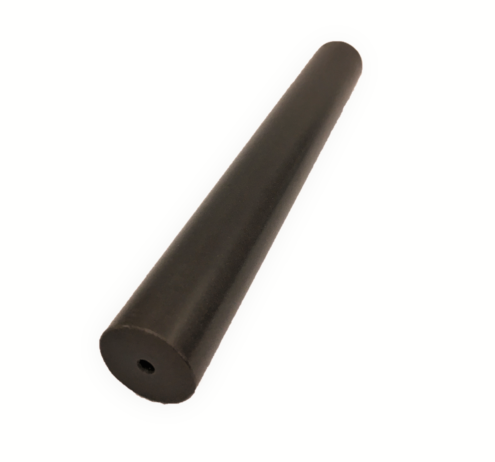Acetal 100 AF PTFE

Acetal 100 AF PTFE Overview
What is the Material: Acetal 100 AF PTFE is a semi-crystalline material and it is a modified acetal homopolymer filled with PTFE (Teflon) fibers.
Key Material Features: This material is beneficial in applications requiring wear resistance, low friction, reduced stick-slip, and dimensional stability.
Other Considerations: It has chemical resistance very similar to acetal homopolymer. Compared to UHMW-PE, this material has higher compressive and tensile strength as well as a similarly low coefficient of friction. Nylon materials typically perform better than acetal materials in abrasive wear applications.
Physical
| Property | Value | Typical ASTM Test |
|---|---|---|
| Chemical Designation | (POM-H) Acetal Homopolymer | |
| Trade Names (®, ™) | Delrin AF Blend, Sustarin H Delrin AF | |
| Filler | PTFE Fibers | |
| Color | Brown | |
| Density (g/cm^3) | 1.50 | D 792 |
Mechanical
| Property | Value | Typical ASTM Test |
|---|---|---|
| Modulus of Elasticity (Tensile Test) (psi) | 310000 | D 638 |
| Tensile Strength at Yield (psi) | 8100 | D 638 |
| Elongation at Yield (%) | 10.3 | D 638 |
| Flexural Strength (psi) | 12700 | D 790 |
| Modulus of Elasticity (Flexural Test) (psi) | 485000 | D 790 |
| Compression Strength: 10% Strain (psi) | 12500 | D 695 |
| Compression Strength: 1% Strain (psi) | 1200 | D 695 |
| Compression Modulus (psi) | 250000 | D 695 |
| Impact Strength (Izod) (ft-lbs/in) | 1.0 | D 256 |
| Hardness (M) | 79 | D 785 |
Thermal
| Property | Value | Typical ASTM Test |
|---|---|---|
| Melting Point (°F) | 347 | D 3418 |
| Deflection Temperature (°F) (66 psi) | 334 | D 648 |
| Deflection Temperature (°F) (264 psi) | 244 | D 648 |
| Service Temperature Continuous (°F) | 185 | |
| Service Temperature Intermittent (°F) | 300 |
Other
| Property | Value | Typical ASTM Test |
|---|---|---|
| Moisture Absorption (%) (24 Hours) | 0.12 | D 570 |
The data stated are typical values intended for reference and comparison purposes only. The data should not be used as a basis for design specifications or quality control. The information is provided as a guide to the best of our knowledge and given without obligation or liability. Testing under individual application circumstances is recommended.
